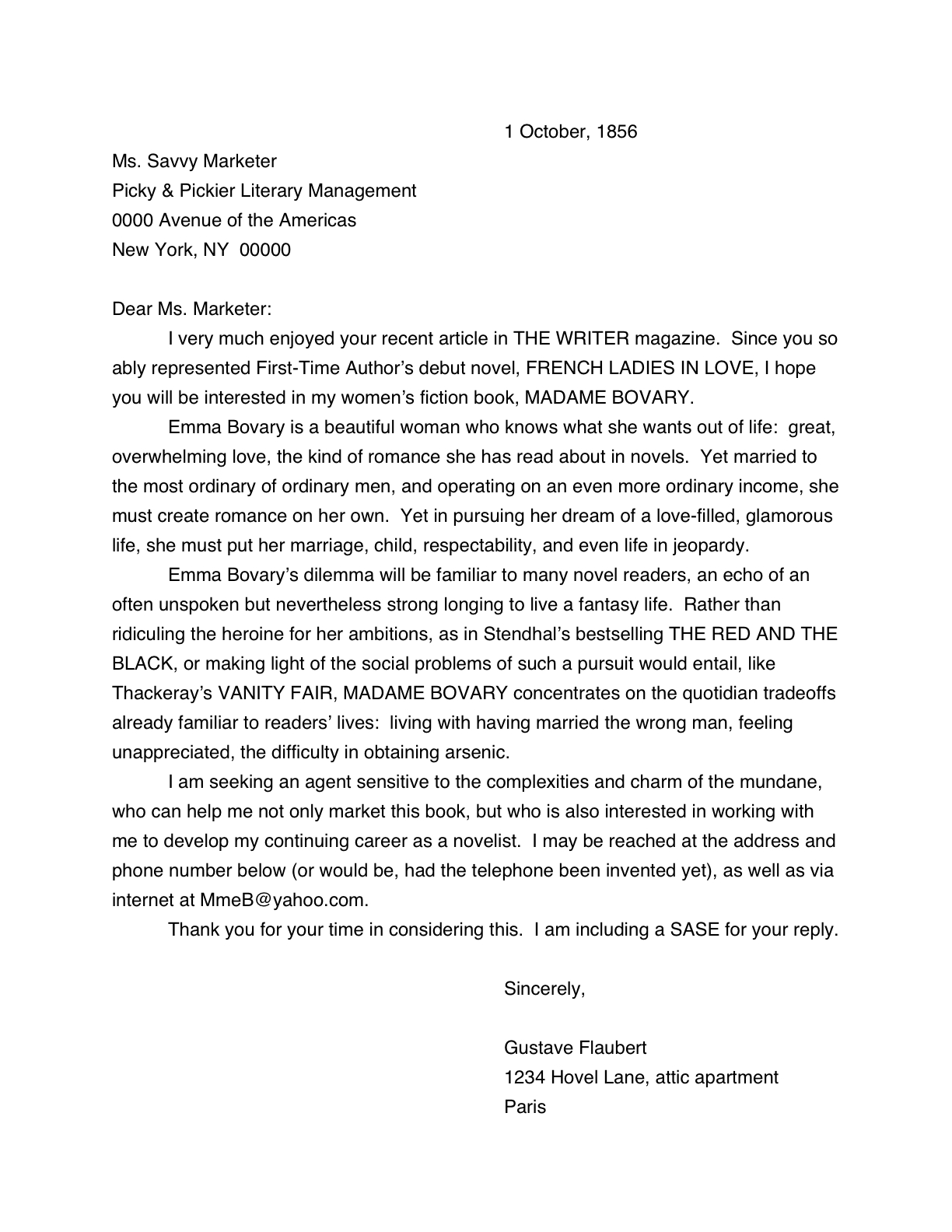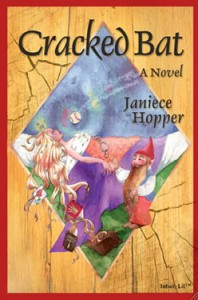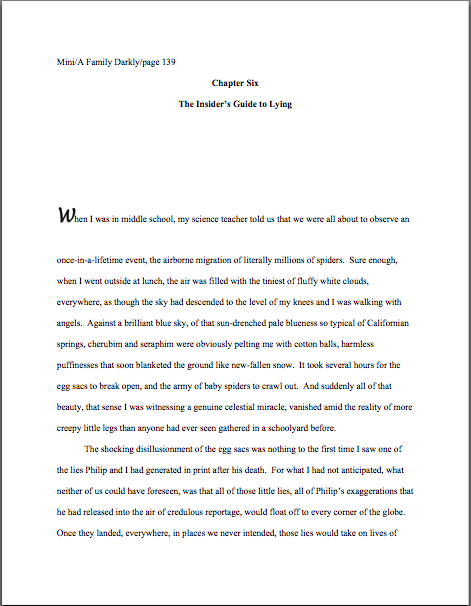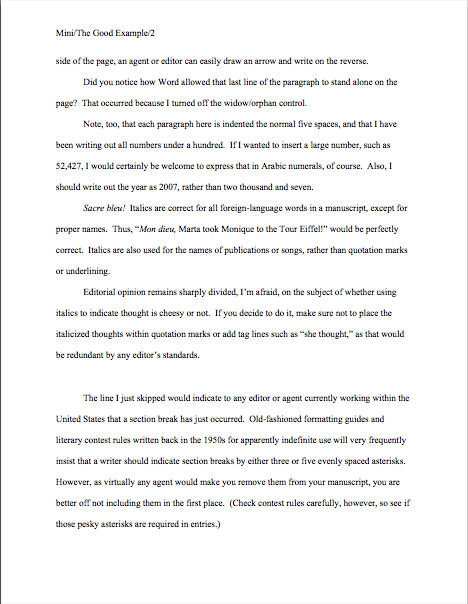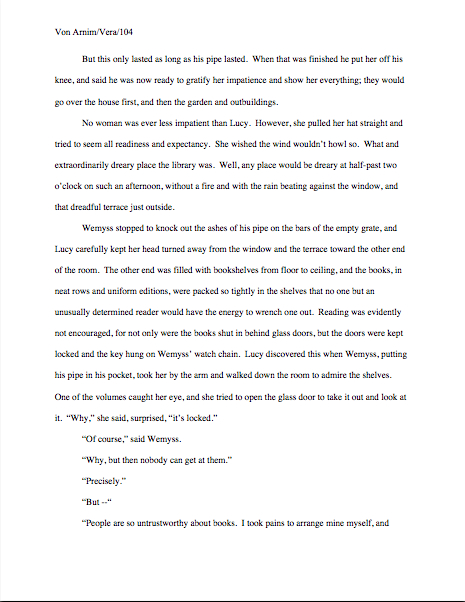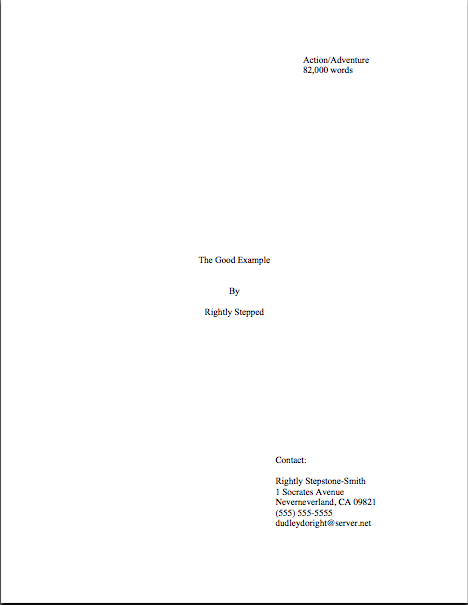Today will be the next-to-last installment in my series on polishing your query letter to a high gloss. Next, I will be taking a quick jaunt through the proper uses of the SASE (which those new to the querying and submission game misuse with surprising frequency), before moving on to the ins and outs of crafting a Millicent-intriguing synopsis, completing my guided tour of the query packet.
I know, I know: not scintillating, perhaps, but definitely practical.
I honestly do want to move us back to discussing craft as soon as possible, but I’ve been toying with walking us all through the under-studied arts of constructing an author bio and marketing plan before we delve back into our texts. Neither a bio nor a marketing plan benefits from being thrown together at the last minute, and I’ve been hearing from both writers and agents that requests for both have been on the rise lately. The marketing plan for fiction is enjoying a renaissance, due no doubt to the current exceptional tightness of the fiction market.
I’ve written about both in the past here at Author! Author!, of course, but if you’d like to see me take another run at ‘em, please drop me a note in the comments section of this post. If you had some specific questions on these subjects you would like to see me answer, that would be a dandy place to mention it.
Okay, let’s turn our attention back to query letter diagnostics.
A quick reminder: the goal here is not to help you construct a generic letter that will work for every agent to whom you might conceivably decide to send it, but to assist you in ferreting out problems with the personalized missives you’re constructing for each one. Yes, you may well reuse sentences and even entire paragraphs from letter to letter, but as anyone who has had much contact with agents can tell you, these are not generalists.
Which means, to put it bluntly, that while their Millicents share common pet peeves, they are all looking for different things in a query letter.
For the record, I don’t believe that there IS such a thing as a universally perfect query letter, one that will wow every agent currently hawking books on the planet. It is logically impossible: agents represent different kinds of books, for one thing, so the moment you mention that your book is a Gothic romance, it is going to be rejected by any agent who does not represent Gothic romances.
It’s as simple as that.
More fundamentally, though, I do not accept the idea of a magical formula that works in every case. Yes, the format I have been going over here tends to work well; it has a proven track record across many book categories.
However — and I hate to tell you this, because the arbitrary forces of chance are hard to combat — even if it is precisely what your targeted agency’s screener has been told to seek amongst the haystack of queries flooding the mailroom, it might still end up in the reject pile if the screener or agent is having a bad day.
What factors might produce that outcome, you ask? A million and one that are utterly outside the querier’s control.
If the agent has just broken up with her husband of 15 years that morning, for instance, it’s probably not the best time to query her with a heartwarming romance. If she slipped on the stairs yesterday and broke both her wrists, she’s probably not going to be all that receptive to even the best knitting book today. And if he has just sprained his ankle in tripping over that stack of manuscripts he meant to read two months ago, it’s highly unlikely that any query is going to wow him within the next ten minutes, even if it were penned by William Faulkner, Toni Morrison, and William Shakespeare in an unprecedented show of time-traveling collaboration.
No writer, however gifted, can win in such a situation.
My point is, there will always be aspects of querying success that you cannot control, and you will be a significantly happier writer in the long run if you accept that there is inevitably an element of luck involved.
Frankly, this took me quite a long time to accept myself. I once received a rejection from an agent who had hand-written, “This is literally the best query letter I have ever read — but I’ll have to pass” in the margins of my missive — as if that was going to make me feel any better about being rejected.
To tell you the truth, this compliment annoyed me far more than it pleased me, and like many writers, my mind flooded with resentful questions. Had the agent just completed a conference call with every editor in the business, wherein they held a referendum about the marketability of my type of novel, voting it down by an overwhelming margin? Had she suddenly decided not to represent the kind of book I was presenting due to a mystical revelation from the god of her choice? Or had the agent just gotten her foot run over by a backhoe, or just learned that she was pregnant, or decided to lay off half her staff due to budget problems?
Beats me; I’ll never know.
But the fact is, whatever was going on at that agency, it was beyond my control. Until I am promoted to minor deity, complete with smiting powers, love potions, and telepathic control of the mails, I just have to accept that I have no way of affecting when my query — or my manuscript, or my published book — is going to hit an agent, editor, reviewer, or reader’s desk.
My advice: concentrate on the aspects of the interaction you CAN control. Speaking of which, let’s recap our checklist so far.
(1) Is my query letter longer than a single page in standard correspondence format?
(2) If my query letter just refuses to be shorter, am I trying to do too much here?
(3) If my query letter is too long, am I spending too many lines of text describing the plot?
(4) Is my query letter polite?
(5) Is it clear from the first paragraph on what precisely I am asking the agent to represent?
(6) Does my letter sound as though I am excited about this book, or as if I have little confidence in the work? Or does it read as though I’m apologizing for querying at all?
(7) Does my book come across as genuinely marketable, or does the letter read as though I’m boasting?
(8) Have I addressed this letter to a specific person, rather than an entire agency or any agent currently walking the face of the earth? Does it read like a form letter?
(9) Do I make it clear in the first paragraph of the letter SPECIFICALLY why I am writing to THIS particular agent — or does it read as though I could be addressing any agent in North America?
(10) If I met this agent or editor at a conference, or am querying because I heard him/her speak at one, or picked him/her because s/he represents a particular author, do I make that obvious immediately?
(11) Am I sending this query in the form that the recipient prefers to receive it? If I intend to send it via e-mail, have I double-checked that the agency accepts e-mailed queries?
(12) Am I absolutely positive that I have spelled the agent’s name correctly, as well as the agency’s? Am I positive that the letter I have addressed to Dear Mr. Smith shouldn’t actually read Dear Ms. Smith? Heck, am I even sure that I’m placing the right letter in the right envelope?
(13) Is the first paragraph of my query compelling? Does it get to the point immediately? If I were an agency screener, would I keep reading into the next paragraph?
(14) Is my brief summary of the book short, clear, and exciting? Have I actually said what the book is ABOUT?
(15) Does my description use unusual details and surprising juxtapositions to make my story come across as unique or my argument as original? Or is the descriptive paragraph a collection of generalities that might apply to many different books within my chosen category?
(16) If I am querying anything but a memoir, is my summary paragraph in the present tense?
(17) Does my summary paragraph emphasize the SPECIFIC points that will make the book appeal to my target audience?
(18) Does my summary paragraph read like a back jacket blurb, full of marketing-talk and generalization, or like a great elevator speech, grounded in details that will appeal to my ideal reader?
(19) Does my summary paragraph echo the tone of the book?
(20) Wait — have I given any indication in the letter who my target audience IS?
Everyone happy with those? Taking that stunned silence for a no, I shall press forward.
(21) Have I mentioned the book category within the first paragraph of my letter?
I bring this up all the time, but it bears repeating: like it or not, you do need to use some of your precious querying space to state outright what KIND of a book you are shopping around.
The fact is, any agent will have to tell any editor what genre your book falls into in order to sell it: it is really, really helpful if you are clear about it up front. (If you’re unclear on why, please see my recent post on the importance of identifying the book category in a verbal pitch.)
As I mentioned a couple of days back, you’d be surprised at how few query letters even mention whether the work being pitched is fiction or nonfiction — and how many describe the book in only the most nebulous of terms.
This is a business run on categories, people: pick one. Tell the nice agent where your book will be sitting in a bookstore, and do it in the language that people in the publishing industry use.
Since I posted on this fairly recently (see BOOK CATEGORIES, right), I shall not run through the categories again. If you’re in serious doubt about the proper term, dash to your nearest major bookstore, start pulling books similar to yours off the shelf in your chosen section, and look on the back cover: most publishers will list the book’s category either in the upper left-hand corner or in the box with the bar code.
Then replace the books tidily on the shelf, of course. (Had I mentioned that I’m a librarian’s daughter? I can prove it, too: Shhh!)
(22) When I mentioned the book category, did I use one of the established categories already in use by the publishing industry, or did I make up one of my own?
Queriers new to the game often believe, mistakenly, that claiming that their books are so completely original, so unlike anything else currently for sale to the English-reading public, that even trying to squeeze them into one of the conceptual boxes provided by the industry would undersell their originality. Instead, these well-meaning souls just make up their own categories with names like Hilarious Western Romance Travelogue or Time-Travel Thriller.
They think — again, mistakenly — that such names are helpful to agents. How could being more specific than the average bookseller be bad?
I hate to break this to you, but in quite a number of ways. To name but two, mythical book categories are unprofessional, and using them betrays a misunderstanding of why agents want to see them in query letters: to figure out whether the book presented is the kind that they currently want to sell. Also, an aspiring writer who clearly knows that he’s supposed to name a book category but tries to wiggle around it is playing rules lawyer, not a strategy likely to convince Millicent and her boss that he’s the type who just loves following directions without a fight.
Do it because they say so.
What could happen otherwise? Picture this: Millicent’s subway train from her tiny apartment in Brooklyn that she shares with four other underpaid office workers broke down, so she has arrived at work half an hour late. There’s an agency-wide meeting in an hour, and she needs to clear her desk of the 200 query letters that came yesterday, in order to be ready for the 14 manuscripts her boss is likely to hand her at the meeting. After she has speed-read her way through 65 of the queries, a kind co-worker makes a Starbucks run. Just before Millicent slits open your query (#126), she takes a big gulp of much-needed caffeine — and scalds her tongue badly.
Your query with its fanciful pseudo book category is now in her hand. Which is she more likely to do, to humor your reluctance to place your book in the traditional conceptual box, as her boss will require her to do if she recommends picking you up as a client, or to shrug, say, “Here’s another one who doesn’t understand how the business works,” and move on to the next envelope?
Blistered tongue or not, do you really want to bait her?
If you’re absolutely, positively convinced that it would be an outrage upon the very name of truth to commit your novel to any one category, PLEASE don’t make up a hyphenate like Western-Fantasy-How-to, in order to try to nail it with scientific precision. In a pinch, if it doesn’t fall clearly into at least a general category, just label it FICTION and let the agent decide.
Provided, of course, that you are querying an agent who routinely represents fiction that does not fit neatly into any of the major established categories. I definitely wouldn’t advise this with, say, an agent who represents only romantica or hard-boiled mysteries.
But whatever you do, avoid cluttering up your query letter, synopsis — or indeed, any communication you may have with an agent or editor prior to clutching a signed contract with them in your hot little hand — with explanations about how your book transcends genre, shatters boundaries, or boldly goes where no novel has gone before.
Even if it’s true. Perhaps especially if it’s true.
Yes, such a speech makes a statement, but probably not the one the writer intends. Here’s how such statements translate into agent-speak: “This writer doesn’t know how books are marketed.”
(23) Have I listed my credentials well? Do I come across as a competent, professional writer, regardless of my educational level or awards won?
If you have any background that aided you in writing this book, you need to make sure you mention it in your query letter. Period. Even your camp trophy for woodworking can be a selling point, in the proper context. Ditto with any publication, anytime, anywhere, regardless of whether you were paid for writing it.
But truthfully, unless you are writing a book that requires very specific expertise, most of your credentials will not actually be relevant to your book. But do say where you went to school, if you did, and any awards you have won, if you have.
To professional eyes, these too are what I like to call ECQLC (Eye-Catching Query Letter Candy).
If you are a member of a regularly-meeting writers’ group, mention that, too: anything that makes you sound like a serious professional is appropriate to include. But if you don’t have anything you feel you can legitimately report here, don’t stretch the truth: just leave out this paragraph.
Unless, of course, you happen to be trying to find an agent or editor for a nonfiction work. Which brings me to…
(24) If I am querying nonfiction, have I made my platform absolutely plain? Would even a reader in a hurry understand why I am uniquely qualified to write this book, if not actually the best-qualified person in the known universe to do it?
A platform, for those of you unfamiliar with the term, is the background that renders a NF author qualified to write a particular book — for tips on what does and doesn’t count as qualification, please see the PLATFORM category on the list at right. Consequently, “What’s the author’s platform?” is pretty much always the first question either an agent or an editor will ask about any nonfiction book.
Which means — and I do seem to being blunt quite a bit today, don’t I? — that a NF query letter that does not make its writer’s platform absolutely clear and appealing will practically always be rejected.
And yes, you do need to satisfy this criterion if your NF field happens to be memoir. I know, I know: it’s self-evident that a memoirist is the world’s leading authority on his own life, but as I’ve mentioned before, a memoir is almost invariably about something other than the author’s sitting in a room alone. If your memoir deals with other subject matter — the platform paragraph of your query letter is the ideal place to make the case that you are an expert on that.
(25) Have I made any of the standard mistakes, the ones about which agents often complain?
I like to think of this as a primary reason to attend writers’ conferences regularly: they are one of the best places on earth to collect massive lists of the most recent additions to agents and editors’ pet peeves. I’ve been going through most of the major ones throughout this series, but some of them can be quite itty-bitty.
Referring to your book as a fiction novel is invariably on the top of every agent’s list, for instance; in point of fact, all novels are fiction, by definition. A nonfiction memoir, a real-life memoir, a true memoirand nonfiction based on a true story, as well as permutations on these themes, are all similarly redundant.
Just don’t do it.
Waffling about the book category is also a popular choice, as are queries longer than a single page, including promotional blurbs from people of whom the agent has never heard (“Chester Smith says this is the most moving book about trout fishing he’s ever read!”), or ANY mention of the book’s potential for landing the author on Oprah. Any or all of these will generally result in the query being tossed aside, unread.
Especially the last; the average screener at a major NYC agency could easily wallpaper her third-floor walk-up in Brooklyn seven times over with query letters that make this claim — and I’m talking about ones received within a single month.
I shall be wrapping up the query checklist tomorrow, my friends. Keep up the good work!






